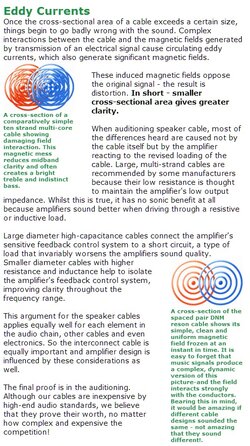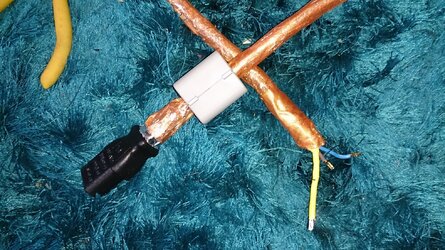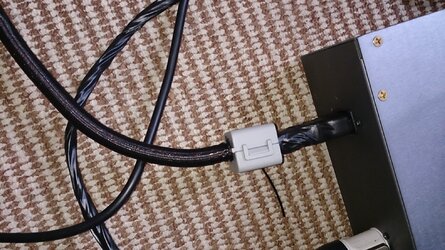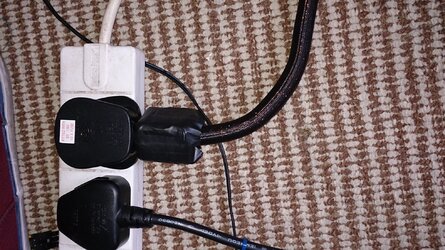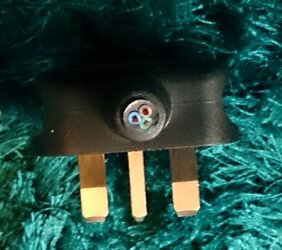- Joined
- Jan 29, 2009
Thought I would try to upgrade a mains cable for digital with some spare materials.
off with that fitted plug

Foil wrap the cable right down and along the inner earth core wire.

add a bit of shrink wrap to reduce the risk of it becoming live (my hairs curly enough )
)
bit of insulation and pop on the ferrite.

time for the braid (which I doubled up for added insulation)

bit of shrink wrap so no foil gets near the mains pins.

trim back some insulation to expose the foil for ferrite number two and terminate the wires.
Quick check to make sure theres no boo boo of a potentially lethal variety.

all good... time to take it to the linear PSU for a taste test.
note. a metal braid and teflon sleeve would be a nice thorough application... but I dont have either.
should shield nicely anyhow.
note you dont terminate at the IEC plug ends ground.... that would be a bad idea
sit back and enjoy your cheap`o`pimped standard mains cable.
(I wouldnt apply it to analogue mains cables but with digital its fair game )
)
insulate those ferrites...

one semi floating shield with suppressor
fin!
off with that fitted plug
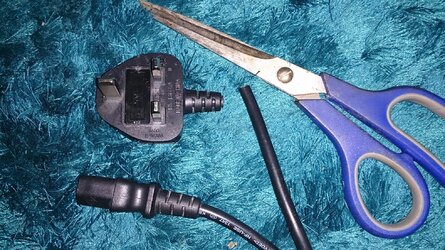
Foil wrap the cable right down and along the inner earth core wire.
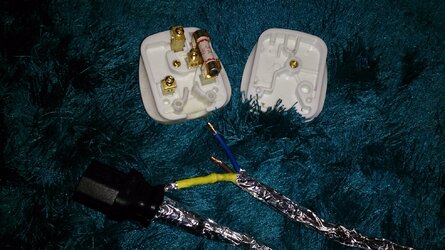
add a bit of shrink wrap to reduce the risk of it becoming live (my hairs curly enough
bit of insulation and pop on the ferrite.
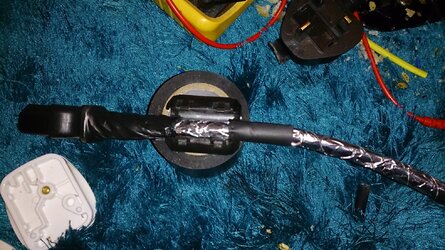
time for the braid (which I doubled up for added insulation)
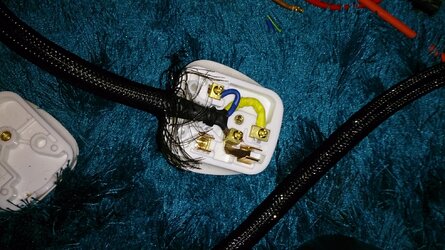
bit of shrink wrap so no foil gets near the mains pins.
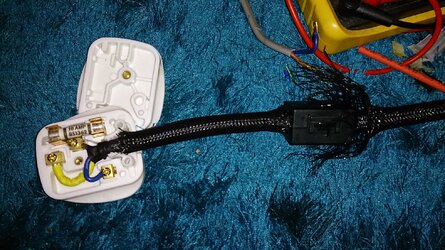
trim back some insulation to expose the foil for ferrite number two and terminate the wires.
Quick check to make sure theres no boo boo of a potentially lethal variety.
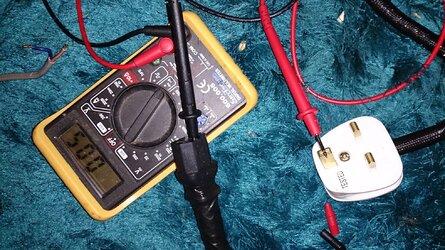
all good... time to take it to the linear PSU for a taste test.
note. a metal braid and teflon sleeve would be a nice thorough application... but I dont have either.
should shield nicely anyhow.
note you dont terminate at the IEC plug ends ground.... that would be a bad idea

sit back and enjoy your cheap`o`pimped standard mains cable.
(I wouldnt apply it to analogue mains cables but with digital its fair game
insulate those ferrites...
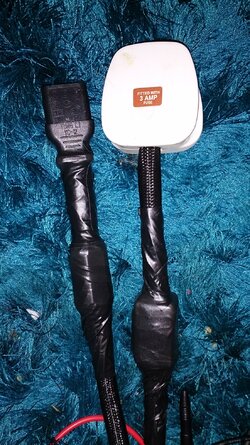
one semi floating shield with suppressor

fin!
